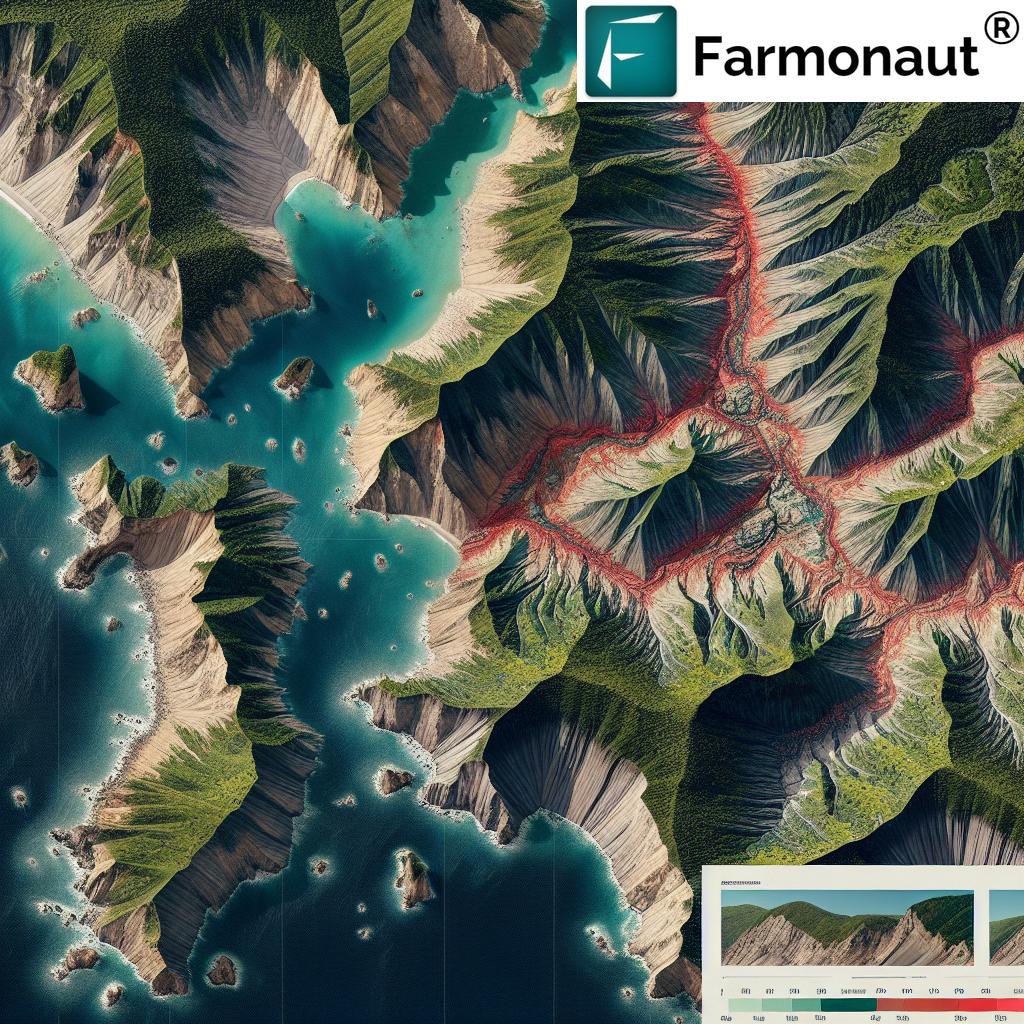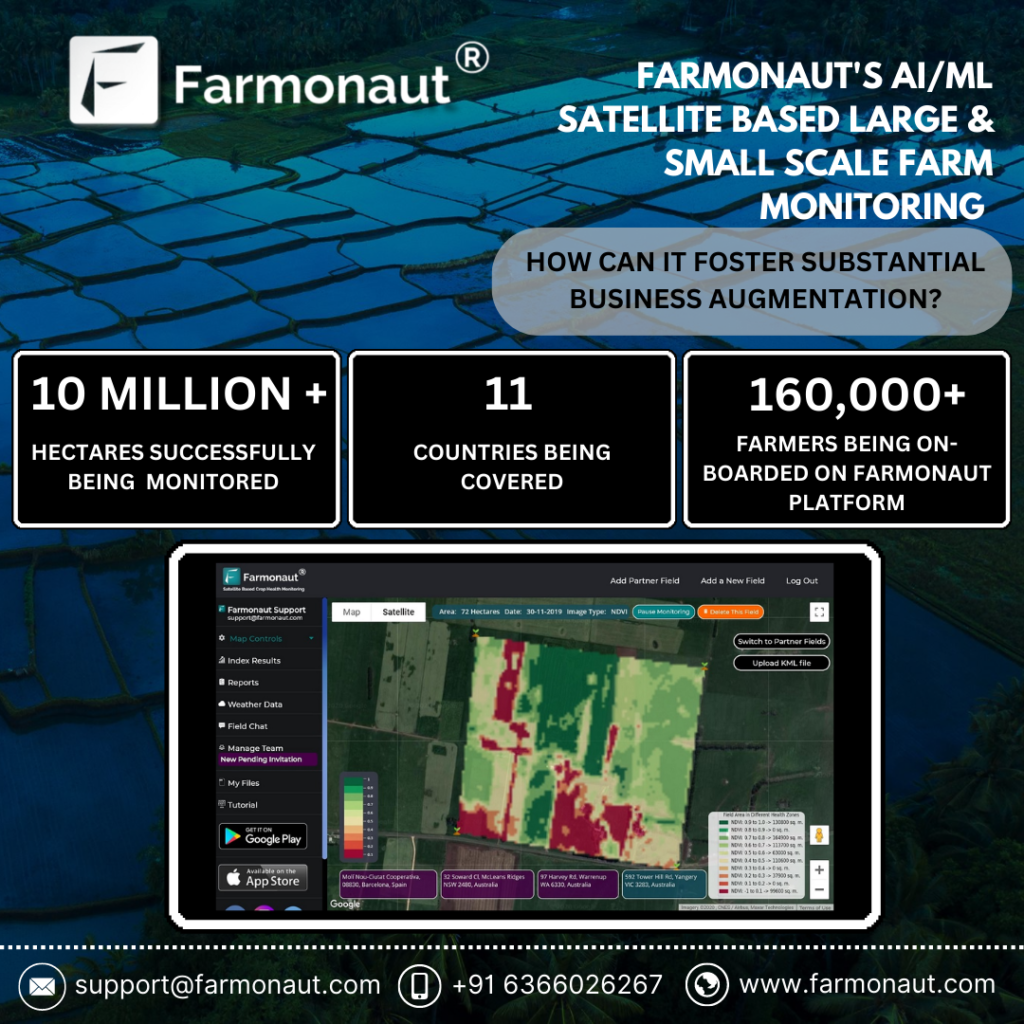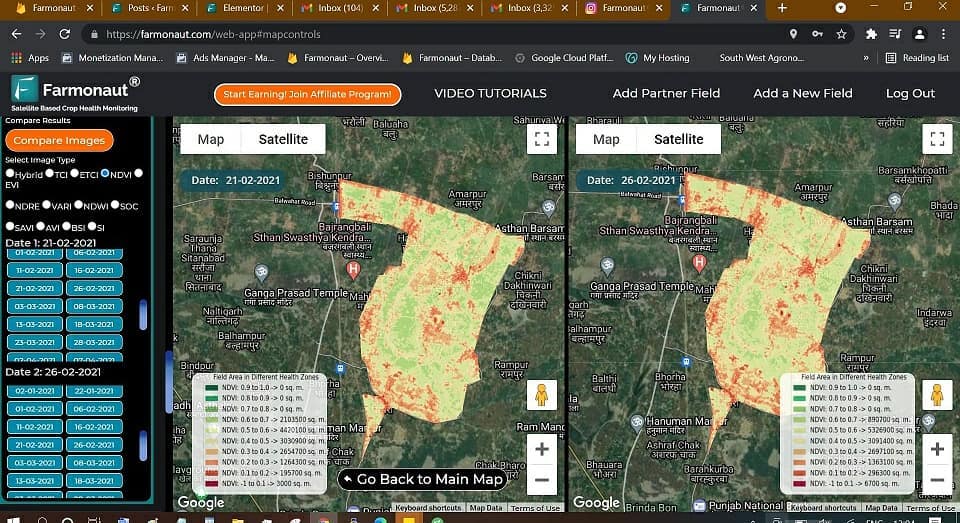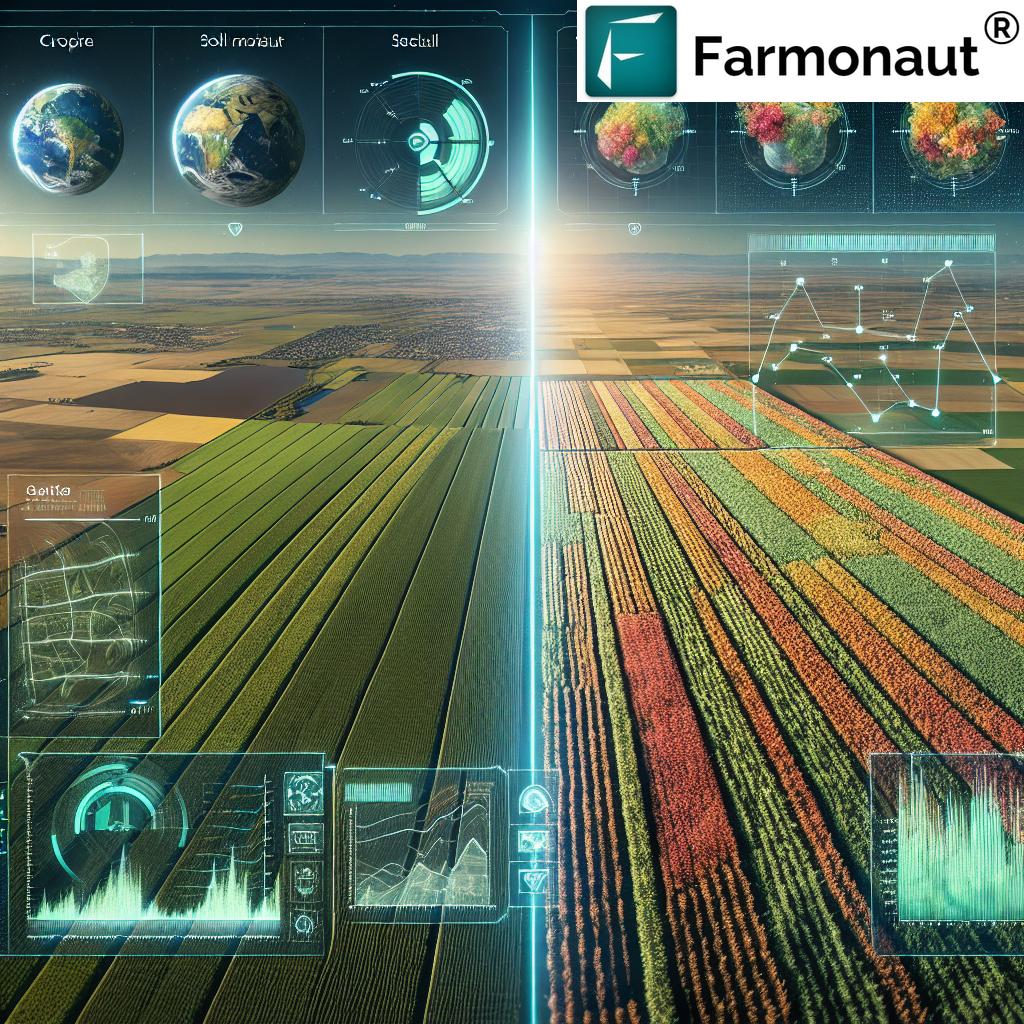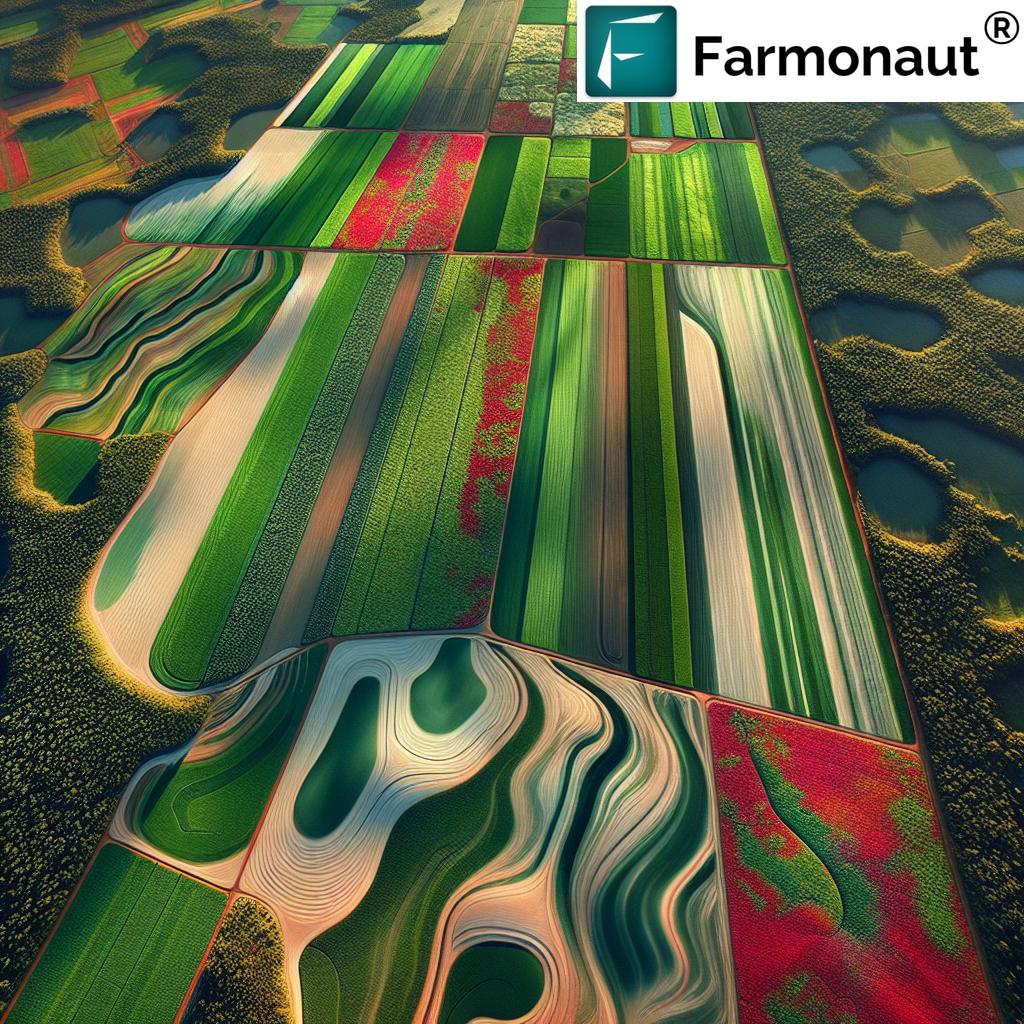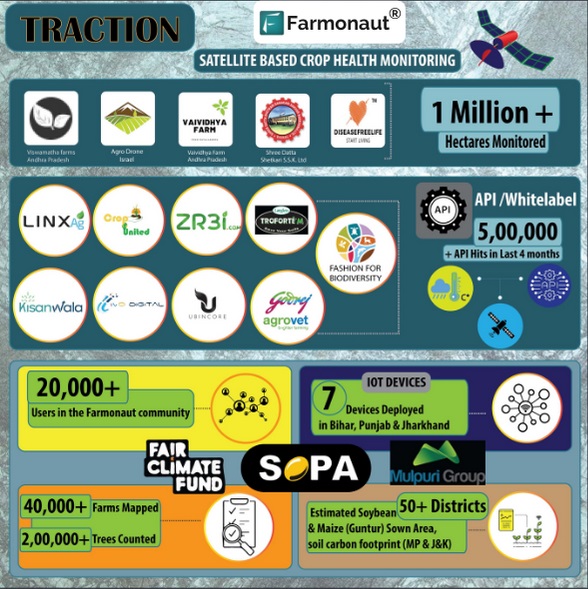Unveiling India’s Agricultural Landscape: From Crop Maps to Farming Challenges in Maharashtra

Welcome to our comprehensive exploration of India’s agricultural sector, where we’ll delve into the intricate world of farming blogs in India, analyze the challenges of crop failure in India, and examine the fascinating realm of crop and farming maps across the nation, with a special focus on the Maharashtra crop map. As experts in the field of agricultural technology and satellite-based farm management, we at Farmonaut are excited to guide you through this journey of discovery and innovation.
The Rise of Farming Blogs in India
In recent years, we’ve witnessed a significant surge in the popularity of farming blogs in India. These digital platforms have become invaluable resources for farmers, agricultural experts, and enthusiasts alike. Let’s explore why these blogs have gained such traction:
- Information sharing: Blogs provide a space for farmers to share their experiences, success stories, and challenges.
- Technology adoption: Many blogs focus on introducing new farming technologies and techniques to traditional farmers.
- Market insights: Readers can gain valuable information about crop prices, market trends, and government policies.
- Community building: Blogs foster a sense of community among farmers, allowing for networking and support.
At Farmonaut, we recognize the importance of these digital platforms in disseminating crucial information. Our own blog serves as a hub for sharing insights on satellite-based crop monitoring, AI-driven farming advice, and the latest developments in agritech.
Understanding India’s Crop Failure Challenges
Crop failure in India remains a significant concern for farmers, policymakers, and the entire agricultural sector. Several factors contribute to this persistent issue:
- Climate change and erratic weather patterns
- Pest infestations and plant diseases
- Soil degradation and nutrient depletion
- Water scarcity and inadequate irrigation infrastructure
- Limited access to modern farming technologies
To address these challenges, we at Farmonaut have developed advanced satellite-based monitoring systems that provide real-time insights into crop health, soil moisture levels, and potential threats. Our Jeevn AI Advisory System offers personalized recommendations to help farmers mitigate risks and improve crop resilience.
The Power of India’s Crop Map
An India crop map is a valuable tool for understanding the diverse agricultural landscape of our nation. These maps provide crucial information about:
- Crop distribution across different regions
- Land use patterns and crop rotation practices
- Crop health and vegetation indices
- Soil types and their suitability for various crops
Farmonaut’s satellite-based technology contributes significantly to the creation and updating of these crop maps. Our high-resolution imagery and advanced AI algorithms allow for accurate mapping of crop types, health status, and growth stages across vast areas.

Exploring the India Farming Map
The India farming map goes beyond crop distribution to provide a comprehensive view of the country’s agricultural activities. This map includes information on:
- Agricultural zones and agro-climatic regions
- Major farming systems (e.g., subsistence, commercial, organic)
- Irrigation networks and water resources
- Agricultural infrastructure (e.g., storage facilities, markets)
At Farmonaut, we utilize this wealth of information to tailor our services to the specific needs of different regions and farming systems across India. Our satellite monitoring and AI advisory systems take into account the unique characteristics of each area to provide the most relevant and actionable insights.
Focus on Maharashtra: A Case Study in Agricultural Mapping
The Maharashtra crop map offers a fascinating glimpse into one of India’s most agriculturally diverse states. Maharashtra’s varied topography and climate zones support a wide range of crops, including:
- Cotton and soybeans in Vidarbha
- Sugarcane in the western region
- Grapes and pomegranates in Nashik
- Rice and coconuts in the Konkan belt
Farmonaut’s satellite monitoring services have been particularly beneficial in Maharashtra, helping farmers optimize their crop management strategies across these diverse agricultural landscapes. Our technology has enabled:
- Early detection of pest infestations in cotton fields
- Precise irrigation scheduling for water-intensive crops like sugarcane
- Yield estimation for horticultural crops such as grapes and pomegranates
- Monitoring of soil health in rice-growing regions
The Farmonaut Advantage: Satellite vs. Drone and IoT Monitoring
While drones and IoT devices have their place in modern agriculture, Farmonaut’s satellite-based monitoring system offers distinct advantages. Here’s a comparison:
| Feature | Farmonaut Satellite System | Drone-based Monitoring | IoT-based Monitoring |
|---|---|---|---|
| Coverage Area | Large scale (thousands of hectares) | Limited (few hundred hectares) | Very limited (specific points) |
| Frequency of Data | Regular (every 3-5 days) | On-demand (requires manual operation) | Continuous (for installed sensors) |
| Cost-effectiveness | High (no on-site equipment needed) | Moderate (equipment and operator costs) | Low (high initial setup costs) |
| Data Processing | Automated (AI-driven analysis) | Semi-automated (requires expert interpretation) | Automated (limited to sensor data) |
| Scalability | Highly scalable | Limited scalability | Difficult to scale |
Farmonaut’s Contribution to Indian Agriculture
At Farmonaut, we’re committed to revolutionizing Indian agriculture through our advanced satellite-based technologies. Our services include:
- Real-time crop health monitoring
- AI-powered advisory systems
- Blockchain-based traceability solutions
- Resource management tools
- Carbon footprint tracking
To experience the power of Farmonaut’s technology firsthand, we invite you to explore our services:
- Try our web application: Farmonaut Web App
- Integrate our API into your systems: Farmonaut API
- Download our mobile app:
- Android: Google Play Store
- iOS: App Store
- Explore our developer documentation: API Documentation
The Future of Indian Agriculture: Embracing Technology
As we look to the future, it’s clear that technology will play an increasingly crucial role in shaping Indian agriculture. The integration of satellite monitoring, AI, blockchain, and other advanced technologies will help address many of the challenges facing farmers today, including:
- Climate change adaptation
- Resource optimization
- Yield improvement
- Market access and fair pricing
- Sustainable farming practices
Farmonaut is at the forefront of this technological revolution, continuously innovating to provide farmers with the tools they need to succeed in an ever-changing agricultural landscape.
Empowering Farmers Through Knowledge and Technology
One of the key ways we’re working to improve Indian agriculture is by empowering farmers with knowledge and technology. Our approach includes:
- Partnerships with agricultural institutions: Collaborating with research organizations and universities to stay at the forefront of agricultural innovation.
- Customized solutions: Tailoring our technology to meet the specific needs of different regions and crop types across India.
- Affordable access: Providing cost-effective solutions that make advanced farming technologies accessible to farmers of all scales.
Addressing the Challenges of Crop Failure
Crop failure remains a significant concern for Indian farmers. At Farmonaut, we’re tackling this issue head-on through:
- Early warning systems: Our satellite monitoring can detect signs of crop stress early, allowing farmers to take preventive action.
- Precision agriculture: By providing detailed insights into soil health and crop needs, we help farmers optimize their inputs and reduce the risk of failure.
- Climate-smart recommendations: Our AI system takes into account local climate data to provide adaptive strategies for changing weather patterns.
- Pest and disease monitoring: Advanced image analysis helps identify potential pest or disease outbreaks before they become widespread.
The Role of Crop Maps in Agricultural Planning
Crop maps play a crucial role in agricultural planning at both the individual farm and national levels. Some key applications include:
- Resource allocation: Governments can use crop maps to better allocate resources like water and subsidies.
- Infrastructure planning: Understanding crop distribution helps in planning storage facilities and transportation networks.
- Market forecasting: Accurate crop maps contribute to more reliable yield estimates and market predictions.
- Policy formulation: Policymakers can use this data to develop targeted agricultural policies and support programs.
Farmonaut’s satellite technology contributes significantly to the accuracy and timeliness of these crop maps, enabling more informed decision-making across the agricultural sector.
Maharashtra: A Microcosm of Indian Agriculture
The Maharashtra crop map serves as an excellent example of the diversity and challenges of Indian agriculture. Some key insights from our work in the region include:
- Water management: In drought-prone areas, our satellite monitoring helps optimize irrigation and promote water-efficient crops.
- Crop diversification: We’ve assisted farmers in identifying suitable alternative crops to reduce dependence on traditional water-intensive options.
- Precision farming in horticulture: Our technology has been particularly beneficial in managing high-value horticultural crops in regions like Nashik.
- Soil health monitoring: Regular satellite imagery helps track soil degradation and guides soil conservation efforts.
The Impact of Farming Blogs in India
The rise of farming blogs in India has had a significant impact on the agricultural community. These blogs serve multiple purposes:
- Knowledge dissemination: Sharing best practices and new farming techniques.
- Problem-solving: Providing a platform for farmers to discuss challenges and find solutions.
- Technology adoption: Introducing and explaining new agricultural technologies to a wider audience.
- Policy awareness: Keeping farmers informed about government policies and programs.
- Market insights: Offering valuable information on crop prices and market trends.
At Farmonaut, we actively contribute to this knowledge-sharing ecosystem through our own blog and educational content, helping to bridge the gap between traditional farming practices and cutting-edge agricultural technology.
Sustainability and the Future of Indian Agriculture
As we look to the future, sustainability is becoming increasingly crucial in Indian agriculture. Farmonaut is committed to promoting sustainable farming practices through:
- Resource optimization: Our technology helps farmers use water, fertilizers, and pesticides more efficiently.
- Carbon footprint tracking: We provide tools for farmers and agribusinesses to monitor and reduce their environmental impact.
- Soil health management: Long-term satellite monitoring helps in maintaining soil fertility and preventing degradation.
- Biodiversity promotion: Our crop mapping can assist in planning for crop diversity and maintaining ecological balance.
Frequently Asked Questions (FAQ)
Q1: How does Farmonaut’s satellite monitoring work?
A: Farmonaut uses high-resolution multispectral satellite imagery to capture data about crop health, soil moisture, and other vital parameters. This data is then processed using advanced AI algorithms to provide actionable insights to farmers.
Q2: Can Farmonaut’s technology help prevent crop failures?
A: While we can’t guarantee 100% prevention, our early warning systems and precise monitoring can significantly reduce the risk of crop failure by detecting issues early and providing timely recommendations.
Q3: How often is the India crop map updated?
A: The frequency of updates varies, but with Farmonaut’s technology, we can provide updates every 3-5 days, depending on satellite pass frequency and cloud cover.
Q4: Is Farmonaut’s technology suitable for small-scale farmers?
A: Yes, we’ve designed our solutions to be scalable and affordable, making them accessible to farmers of all scales, including small-scale and marginal farmers.
Q5: How does the Maharashtra crop map differ from other states?
A: The Maharashtra crop map reflects the state’s diverse agro-climatic zones, showing a wide variety of crops from cotton and soybeans in Vidarbha to grapes in Nashik and rice in the Konkan region.
Conclusion: Embracing a Tech-Driven Agricultural Future
As we’ve explored throughout this blog, the landscape of Indian agriculture is rapidly evolving. From the rise of farming blogs in India to the development of sophisticated crop maps and the ongoing battle against crop failure, technology is playing an increasingly vital role in shaping the future of farming.
At Farmonaut, we’re proud to be at the forefront of this agricultural revolution, providing farmers with the tools and insights they need to thrive in an ever-changing environment. By leveraging satellite technology, AI, and data analytics, we’re helping to create a more resilient, productive, and sustainable agricultural sector for India.
We invite you to join us on this journey towards a smarter, more efficient future for Indian agriculture. Explore our services, try our technology, and become part of the Farmonaut community today.
Subscribe to Farmonaut
Ready to experience the power of satellite-based farm management? Subscribe to Farmonaut and start optimizing your agricultural practices today:
Together, let’s cultivate a brighter future for Indian agriculture!


